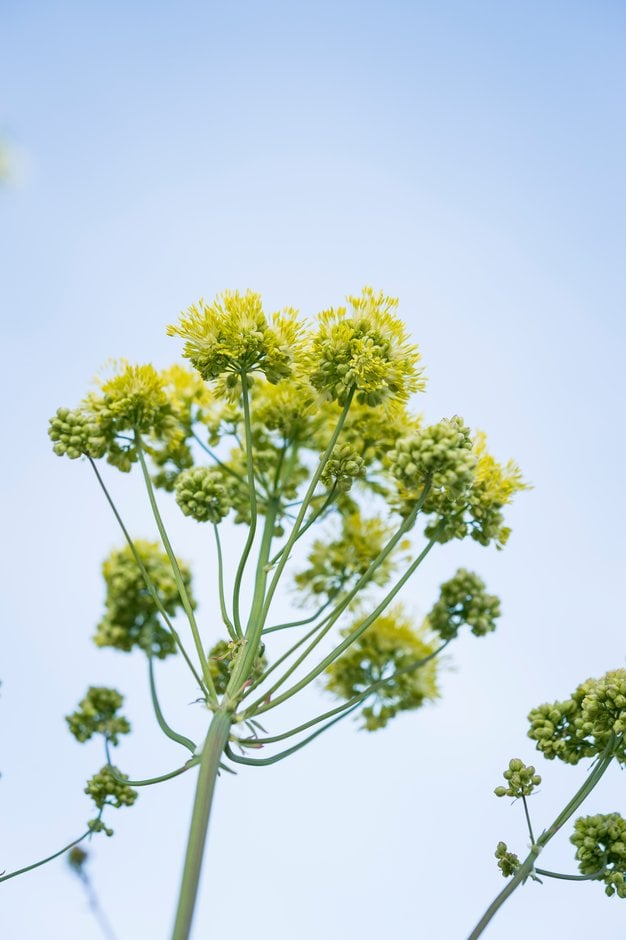Thalictrum flavum subsp. glaucum
glaucous-leaved yellow meadow rue
A clump-forming deciduous perennial about 1m tall, with greyish blue-green stems and leaves to 40cm long that are composed of 3 or 4-lobed leaflets, and in summer large, terminal panicles of fluffy, fragrant, pale sulphur yellow flowers
Other common names
spherical-spiked meadow rueSynonyms
Thalictrum flavum 'Glauca'Thalictrum sphaerostachyum
see moreThalictrum speciosissimum
Thalictrum glaucum
Size
Ultimate height
1–1.5 metresTime to ultimate height
2–5 yearsUltimate spread
0.1–0.5 metresGrowing conditions
Moisture
Moist but well–drainedpH
Acid, Alkaline, NeutralColour & scent
| Stem | Flower | Foliage | Fruit | |
| Spring | Grey Silver Green | |||
|---|---|---|---|---|
| Summer | Yellow | Grey Silver Green | ||
| Autumn | Grey Silver Green | |||
| Winter |
Position
- Full sun
- Partial shade
Aspect
East–facing or South–facing or West–facing
Exposure
Sheltered Hardiness
H7Botanical details
- Family
- Ranunculaceae
- Native to GB / Ireland
- No
- Foliage
- Evergreen
- Habit
- Columnar upright
- Potentially harmful
- Contact with foliage may irritate the skin. Wear gloves and other protective equipment when handling
- Genus
Thalictrum can be rhizomatous or tuberous perennials with ternately or pinnately divided, often attractive foliage, and panicles or racemes of small flowers with showy stamens and sometimes large colourful petal-like sepals
- Name status
Correct
- Plant range
- SW Europe to N Africa
How to grow
Cultivation
Grow in moist, humus-rich soil, best partial shade but can tolerate drier soil and more sun than many other species. May need staking. See staking perennials for further advice
Propagation
Propagate by seed in pots in a cold frame as soon as seed is ripe or in early spring. Propagate by division in spring as new growth begins
Suggested planting locations and garden types
- Cottage and informal garden
- Wildlife gardens
- Flower borders and beds
Pruning
Faded flower stems can be cut back in late autumn or in spring before new growth starts emerging
Pests
Generally pest-free
Diseases
May be susceptible to powdery mildews in dry conditions
Get involved
The Royal Horticultural Society is the UK’s leading gardening charity. We aim to enrich everyone’s life through plants, and make the UK a greener and more beautiful place.
